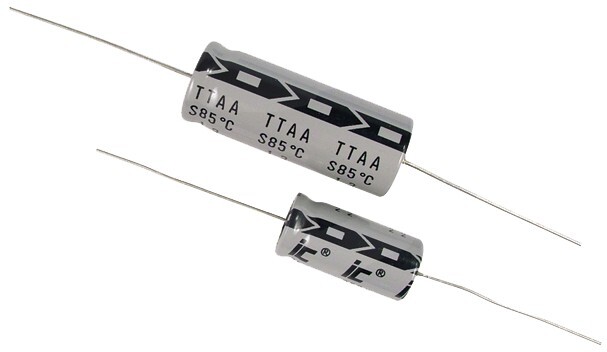Capacitors are fundamental components in electronic circuits, storing and releasing electrical energy as needed. However, one crucial aspect of capacitors that often requires attention is polarity. In this article, we'll delve into the concept of capacitor polarity, its importance, and methods for determining it accurately.
What is capacitor polarity?
Capacitor polarity refers to the orientation or directionality of voltage across a capacitor. Unlike resistors, which can handle voltage in either direction, many capacitors have specific polarity requirements due to their internal construction. Polarized capacitors, such as electrolytic and tantalum capacitors, must be connected in a certain way to function correctly and avoid damage.

Does polarity matter on a capacitor?
Yes, polarity matters significantly on certain types of capacitors. Electrolytic capacitors, for example, are highly polarized and can be damaged if connected with reverse polarity. Applying voltage in the wrong direction can cause the capacitor to overheat, leak electrolyte, or even explode. Non-polarized capacitors, on the other hand, can tolerate voltage in either direction and do not have polarity markings. Helpful resource: https://capacitors.quora.com/Does-it-matter-which-way-you-connect-a-capacitor
How do you determine the polarity of a capacitor?
-
Physical Markings: Many polarized capacitors are labeled with markings indicating their polarity. Common symbols include a "+" sign near one terminal for the positive lead and a "-" sign for the negative lead. Additionally, the longer lead of an electrolytic capacitor typically denotes the positive terminal, while the shorter lead indicates the negative terminal.
-
Datasheet or Manufacturer Specifications: If markings are unclear or absent, referring to the capacitor's datasheet or manufacturer specifications is essential. These documents typically provide detailed information about the capacitor's polarity, including terminal identification and voltage ratings.
-
Visual Inspection: Electrolytic capacitors often have a band or stripe on the outer casing near the negative terminal. This band indicates the polarity, with the terminal adjacent to the band being the negative lead.
-
Multimeter Testing: Using a multimeter set to measure resistance or continuity, you can determine the polarity of a capacitor. Connect the multimeter's probes to the capacitor terminals and observe the polarity indicated by the meter's reading. A positive reading indicates the positive terminal, while a negative reading indicates the negative terminal.
Helpful resource: https://www.nexpcb.com/blog/capacitor-polarity-how-to-tell
In conclusion, capacitor polarity is a critical consideration when working with electronic circuits, particularly with polarized capacitors like electrolytic and tantalum types. Understanding the significance of polarity and employing appropriate methods to determine it accurately are essential for ensuring proper functionality and avoiding damage to components. By following polarity markings, consulting datasheets, and utilizing testing methods, electronics enthusiasts and professionals can confidently integrate capacitors into their projects with precision and reliability.
Facts Checked by Hugh Johnson
Hugh Johnson stands tall in the realms of both the chip industry and the electronic parts industry, earning acclaim as an esteemed expert in these fields. With an extensive background steeped in semiconductor technology, Hugh's expertise transcends chip design and fabrication, encompassing a profound understanding of electronic components' intricate functionalities and applications. His seasoned knowledge spans diverse facets, from microchip architecture and fabrication techniques to the broader landscape of electronic parts utilized across industries.









